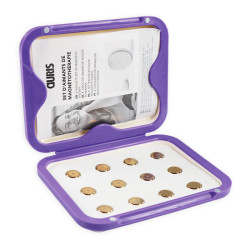 Raynaud's disease is a circulatory disorder that often goes unrecognised, but which affects many people, particularly women and the elderly. Manifested by a sensation of intense cold and changes in the colour of the fingers or toes, this condition can be embarrassing, even painful. Fortunately, there are solutions to reduce the symptoms and improve day-to-day comfort.
Raynaud's disease is a circulatory disorder that often goes unrecognised, but which affects many people, particularly women and the elderly. Manifested by a sensation of intense cold and changes in the colour of the fingers or toes, this condition can be embarrassing, even painful. Fortunately, there are solutions to reduce the symptoms and improve day-to-day comfort.
What is Raynaud's disease?
Raynaud's disease is characterised by a temporary reduction in blood flow to the extremities (usually the fingers and toes). This abnormal reaction of the blood vessels occurs mainly in response to cold or stress.
The two types of Raynaud's :
1. Primary Raynaud's :
- This is the most common and least serious form. It is often idiopathic, i.e. no underlying cause is identified.
- It generally appears between the ages of 15 and 30.
2. Secondary Raynaud's phenomenon :
- Rarer but more serious, it is linked to an underlying disease such as scleroderma, lupus or certain autoimmune diseases.
- It can also be caused by certain medications or prolonged exposure to vibrations (industrial tools, for example).
What are the symptoms?
Raynaud's disease manifests itself in attacks and often follows three phases:
- 1. Pale phase (ischaemia): the fingers or toes turn white, a sign that the blood is no longer circulating properly.
- 2. Cyanosis phase: the extremities take on a bluish hue due to the lack of oxygen.
- 3. Redness phase: when the blood returns, the fingers or toes turn red, often accompanied by tingling or pain.
These attacks can last from a few minutes to several hours, depending on the severity of the condition and the triggers.
What can be done to relieve Raynaud's disease?
1. Precautions and changes to habits
- Protect yourself from the cold: wear gloves or thick socks. Heated gloves or hand warmers can also be very useful. Avoid temperatures that are too low and protect yourself well in winter.
- Avoid stress: practise relaxation techniques such as meditation, deep breathing or yoga. Learn to identify and manage stressful situations.
- Stop smoking: smoking aggravates circulation problems and can increase the frequency of attacks.
2. Natural therapies and remedies
- Warm hydrotherapy: soak your hands or feet in warm water to warm them up.
- Magnet therapy: therapeutic magnets improve microcirculation and help reduce the feeling of cold in the extremities.
- Essential oils: ginger or peppermint essential oil can be massaged into the skin to warm it and stimulate circulation.
3. Appropriate physical activity
Regular exercise improves general blood circulation and can reduce the intensity of attacks. Activities such as walking, yoga or gentle swimming are particularly recommended.
4. Medical treatments
- Vasodilators: in cases of severe Raynaud's, a doctor may prescribe medication to dilate the blood vessels.
- Treatment of the underlying disease: for secondary Raynaud's, it is crucial to treat the pathology responsible.
As you will have realised, although Raynaud's disease can be embarrassing and limit certain activities, it can be reduced through preventive measures, appropriate treatments and better management of trigger factors. By adopting a protective routine and exploring natural solutions such as magnetotherapy, you can significantly reduce the symptoms of Raynaud's disease and improve your daily life.



